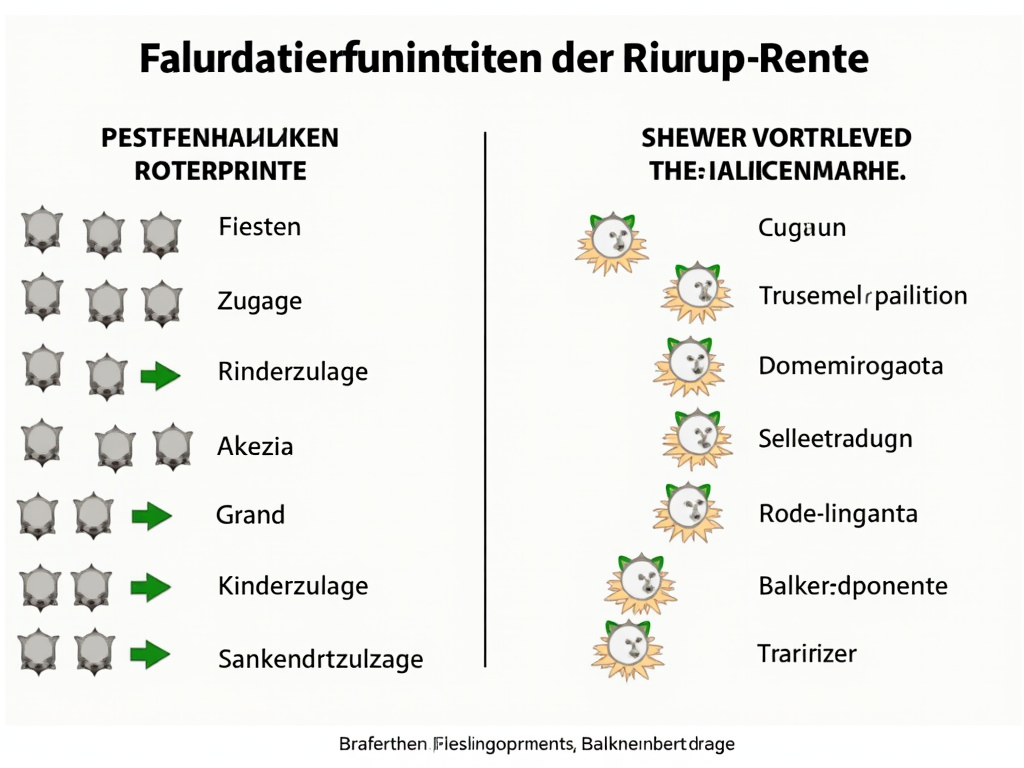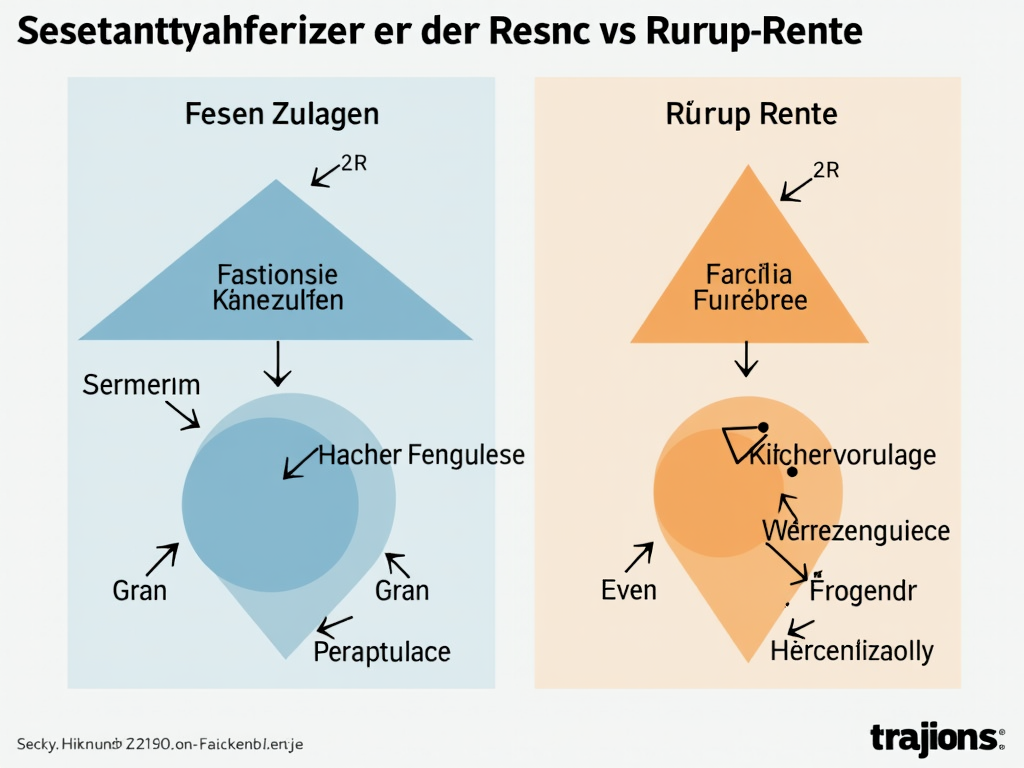In the landscape of retirement provision in Germany, the Riester Pension and the Rürup Pension stand out as two prominent models to choose from. Both offer state subsidies, but in different ways, and target different groups. This article highlights the specific financing mechanisms of both types of pensions and analyzes which target groups benefit the most. Investors and private savers will find a comprehensive overview here to help them make the right decision for their retirement provision.
Overview of State Subsidies for Riester and Rürup Pensions

The state subsidies are at the heart of both the Riester and Rürup pensions and are crucial for their attractiveness as options for private retirement provision in Germany. Regardless of the numbers and regulations, the targeted subsidy not only offers financial support but also reflects the political motivation to encourage people to take responsibility for their own pension plans.
The Riester Pension is known for its fixed contributions. It offers a basic subsidy of 175 euros per year for every person and attractive child subsidies: 300 euros per year for children born in 2008 or later, and 185 euros for older children. Additionally, there is a rare subsidy for recent graduates, which provides a one-time incentive of 200 euros for insured individuals up to 25 years of age, aimed at encouraging young workers to start their retirement provision early. These subsidies primarily aim to support and relieve families and individuals with lower incomes. Interestingly, contributions and subsidies can be deducted from taxes up to a maximum of 2,100 euros per year as extraordinary expenses, thereby creating an additional incentive for the Riester Pension.
In contrast to the Riester Pension, the Rürup Pension relies exclusively on tax advantages, which can multiply the contributions paid, especially for self-employed individuals and freelancers. This group benefits especially because they cannot accumulate conventional state pension rights. The fact that contributions can be fully deducted as extraordinary expenses in the tax declaration offers considerable tax savings, particularly for high earners. Unlike the Riester Pension, which operates with subsidies, this system is less straightforward in the Rürup Pension but is characterized by other advantages.
In many cases, the choice between Riester and Rürup pensions does not only depend on pure numbers but on the specific life circumstances and financial goals of the saver. While the Riester Pension attracts with fixed commitments, the Rürup Pension offers a flexible alternative for the self-employed, who otherwise would have no access to state support. Both models clearly demonstrate how the state wishes to strengthen personal provision through targeted incentives.
Target Group Analysis: Who Benefits from Riester and Rürup Pensions?

The Riester Pension and the Rürup Pension are important tools for private retirement provision in Germany, supported by state subsidies. Both models aim to ensure living standards in retirement age but target different groups and offer specific advantages and conditions. A detailed analysis of the target groups is essential to understand which form of pension is most suitable for whom.
The Riester Pension is often the first choice for employees, civil servants, and parents during the education period. Its uniqueness lies in the fixed state subsidies, particularly attractive for families with multiple children. These families benefit from the child subsidy, which can be up to 300 euros per year. Since the subsidies are not tied to the amount of contributions paid, the Riester Pension offers a solid opportunity for additional retirement provision, especially for those with lower incomes. Self-employed individuals can only take out a Riester Pension if they contribute to the state pension system or if their spouse has a Riester contract. This significantly limits accessibility for many self-employed individuals.
In contrast, the Rürup Pension explicitly targets self-employed individuals and freelancers, who do not have the opportunity to benefit from the advantages of Riester. Since the Rürup Pension is tax-supported, it is particularly beneficial for high-income individuals, allowing them to effectively reduce their tax burden. Tax savings increase with the amount of contributions, making this pension option particularly attractive for those who earn well. In addition to self-employed individuals, well-paid employees also benefit from the Rürup Pension if they wish to increase their retirement provision beyond the legal level.
Regarding payouts, the two pensions offer different approaches. The Riester Pension is more flexible in terms of payout options: up to 30% of the capital can be withdrawn at the beginning of the retirement phase. This flexibility is absent in the Rürup Pension. The latter instead convinces with the possibility of investing in financial markets, which can yield potentially higher returns, but also involves a lifetime pension payment without the possibility of early withdrawal or cancellation.
In general, the target group analysis clarifies that the choice between Riester and Rürup pensions largely depends on the professional situation and financial circumstances of the savers. While families benefit from the structure of the Riester Pension, the Rürup Pension is the preferred choice for self-employed individuals and high earners, not only for retirement provision but also to take advantage of tax benefits.